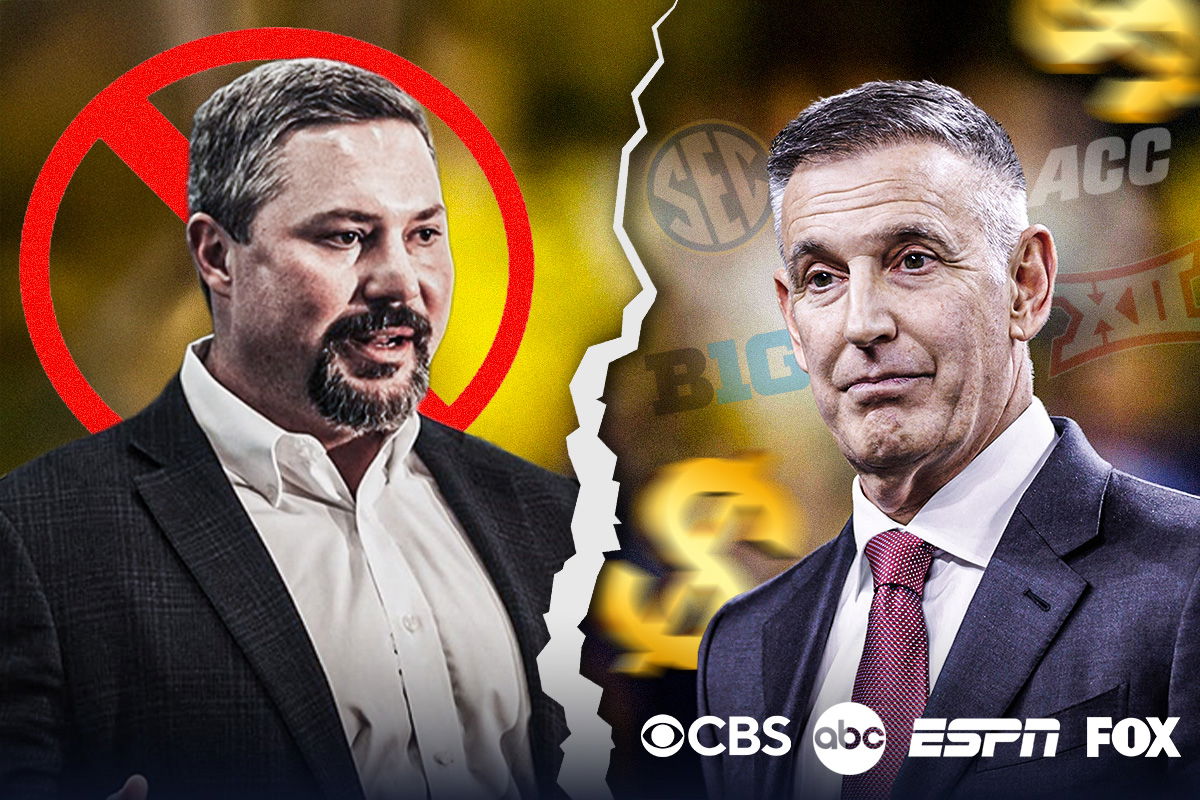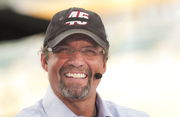

Imagine spending serious money on a TV spot that calls out college sports’ “Power Four commissioners,” only to have the networks outright refuse to air it. That’s exactly what Texas Tech billionaire Cody Campbell faced. And if this surprises you, just wait until you hear why.
Watch What’s Trending Now!
Campbell stands behind President Trump’s “Saving College Sports” plan, designed to protect smaller sports and ensure athletes get a fair shake. In his new 30-second commercial, he says, “Their greed is bankrupting all but the biggest schools, and women’s sports and Olympic programs everywhere are paying the price.” In other words, the ad directly criticizes the commissioners’ greed and calls for replacing the NCAA with a new governing body.
Despite paying big networks like Fox and ABC to air the ad, Campbell was stonewalled. The networks accepted the cash but then declined to run the spot, citing vague “business decisions.” Campbell, however, insists the real reason behind the silence is pressure from powerful conferences trying to suppress his message. Ultimately, this isn’t just an ad rejection; it’s a window into the power players shaping college sports stories and controlling what fans see.
ADVERTISEMENT
The TV money that rules the College sports
At the heart of college sports finances lie television contracts. Conferences like the SEC, Big Ten, and Big 12 have locked in multibillion-dollar deals with networks such as ESPN and Fox that do more than broadcast games; they shape the entire sports ecosystem. Here’s the lay of the land:
The Big Ten secured a 7-year, $7B deal with Fox, CBS, and NBC, boosting annual media payouts to roughly $60-70M per school.
The Big 12 signed a 6-year, $2.28B contract with ESPN and Fox, increasing annual media revenue per school from $22M to about $31.7M.
The SEC locked in a 10-year, $7.1B agreement with ESPN and ABC, slated to deliver around $70M per school annually starting in 2024, making Disney the exclusive home for SEC football and basketball.
The ACC extended its long-term partnership with ESPN through 2036, worth approximately $4.8B total, offering stability but less flexibility, with media payouts averaging $40-$45M per school annually.
ADVERTISEMENT
Networks used to just air games. Now they’re deeply invested partners, like ESPN’s $1.3B yearly College Football Playoff deal or the Fox-Disney streaming bundle. Because these relationships are so lucrative, networks shy away from anything that might ruffle the feathers of their conference giants. For instance, when the Pac-12 quietly collapsed, ESPN and Fox stayed silent because the Big Ten and Big 12’s expansion meant bigger paychecks. And that’s exactly why Campbell’s ad got dropped. But controlling the TV eye is only part of the story.
Top Stories
Donald Trump Takes Unexpected Shot at NFL With Name Change Call During FIFA World Cup Draw

Bills Legend Jim Kelly Announces Final Cancer Update After Years of Battle

‘RIP’: NASCAR World Crumbles in Tears as 39-YO Former JR Motorsports Driver Passes Away

Alex Noren’s Hot-Mic, Akshay Bhatia’s DOD & More: Top Moments From Hero World Challenge R2

Who Is Matthew Campbell’s Wife Erica? All About Iowa State HC’s Sixth Grade Sweetheart

EXCLUSIVE: Kyle Petty: NASCAR’s Renaissance Man

ADVERTISEMENT
Boosters: The new power brokers behind the scenes of College sports
Boosters aren’t just donors anymore, they’re game-changers:
Fund athlete contracts, transfer portals, NIL collectives (Campbell co-founded Texas Tech’s Matador Club).
Influence team rosters and competitiveness.
Push for reforms like allowing collective TV rights sales (think NFL model) to fund women’s and Olympic sports fairly.
But with growing influence comes blurred lines of authority. Boosters are becoming “shadow commissioners,” exerting unofficial regulatory power. They propose changes, shape narratives, and influence advantages like official NCAA leaders and conference commissioners, but without formal titles. Despite this, real power still rests with NCAA leaders, conferences, networks, and federal regulators.
ADVERTISEMENT
Meanwhile, those closest to the game: fans and athletes, remain largely on the sidelines. Even though fans fuel college sports’ popularity, but have no formal voice in media deals, conference realignment, or ticket pricing, which prioritize TV revenue. Athletes, even with NIL earnings, still lack meaningful input on major decisions like playoffs, contracts, and revenue distribution that shape their careers. And this glaring power imbalance spills over into a bigger issue: free speech in college sports media.
Can sports media speak freely? The tough reality
Free speech in sports media is complicated by the fact that networks like ESPN, Fox, and NBC profit billions from the sports they broadcast. While it’s common for networks to block ads or sponsors that conflict with their interests, such as controversial Super Bowl sponsors, the bigger issue is political or critical content about the sport itself.
ADVERTISEMENT
Massive deals, like the Big Ten’s $7B contract, give networks strong reasons to avoid airing content that might upset partners. This raises the question: can networks truly act as unbiased gatekeepers when their profits depend on protecting the status quo?
This isn’t hypothetical. At De Anza College, a livestream was abruptly cut when athletes criticized their administration. Similarly, ESPN host Stephen A. Smith faced potential censorship as a student journalist after publishing a critical editorial. These examples highlight the tension between free expression and institutional control in sports environments. Networks routinely prioritize business interests over open debate, muffling critical voices. With TV networks and boosters wielding enormous financial clout, college sports media are tightly controlled. So it’s no surprise Campbell’s booster-backed ad was quietly killed. But the financial forces fueling college sports keep growing, and private equity is rushing in.
ADVERTISEMENT
Private equity joins the fray
The lure of college football’s steady broadcast cash has private equity firms circling. Currently, the Big Ten is reportedly closing in on a $2B deal that would extend its grant of rights to 2046, locking up media control for another decade. Three private capital groups are said to be circling the sidelines, waiting for the kickoff signal. The pitch? A flood of cash to supercharge the league and a promise to “streamline” for growth and efficiency.
Why does Wall Street love college football?
Predictable revenue streams from long-term TV contracts
Opportunities to restructure for greater margins and efficiency
Marketing gold in college football’s heritage, logos, and fan loyalty for sponsorships and merch
ADVERTISEMENT
It’s a match made in financial heaven, but one that raises thorny questions. Will Wall Street care about tradition, rivalries, or player welfare? Or will the only scoreboard that matters be the bottom line? Critics warn that as private capital floods in, the “college” in college football risks fading, replaced by profit-driven priorities.
So here’s the final whistle: If networks silence criticism, boosters buy influence, and commissioners bow to money, who really stands guard to protect college sports’ integrity? Because if private equity gets the final say, we might soon realize the only thing truly amateur left is the illusion of amateurism itself.
ADVERTISEMENT
ADVERTISEMENT
ADVERTISEMENT

